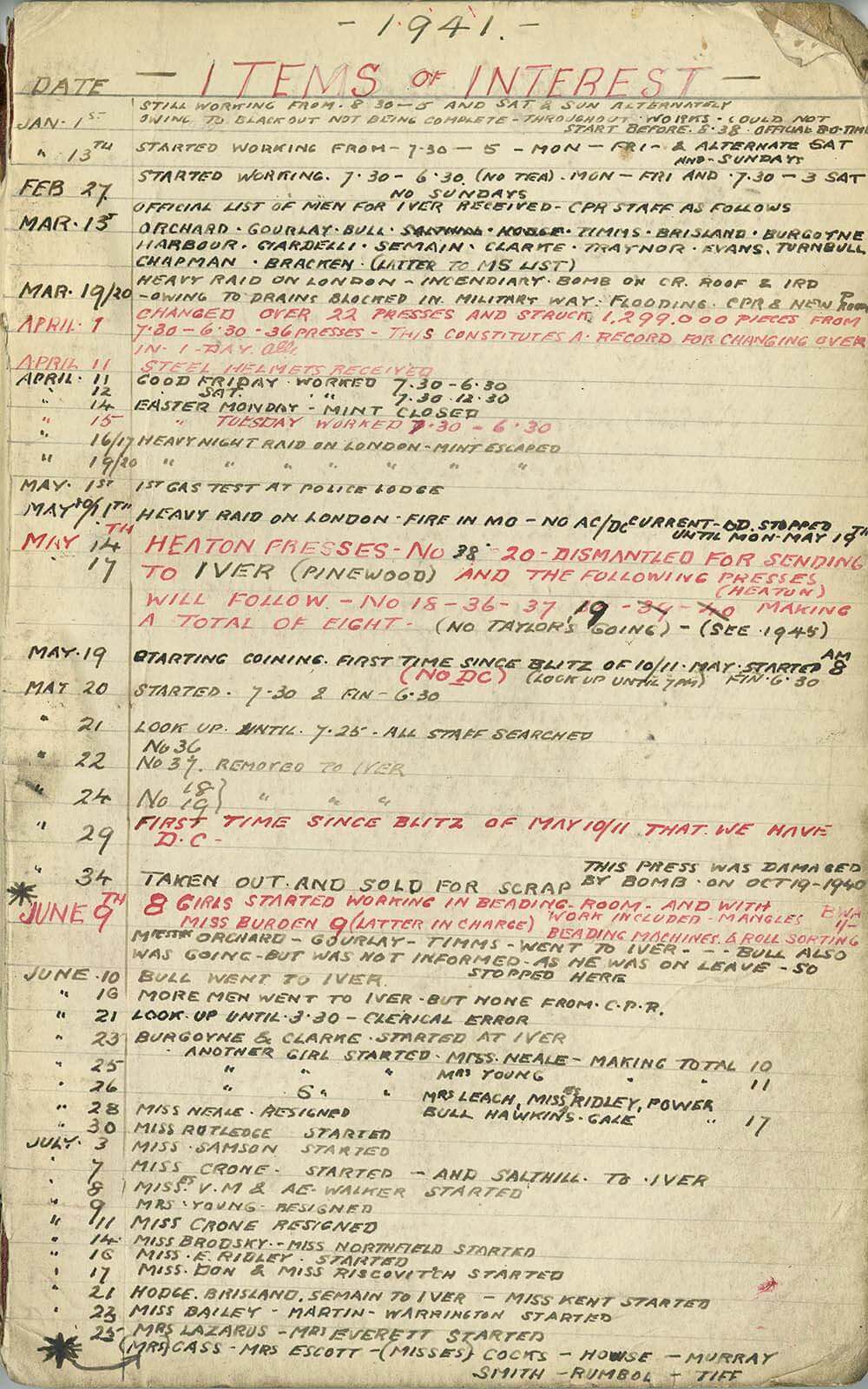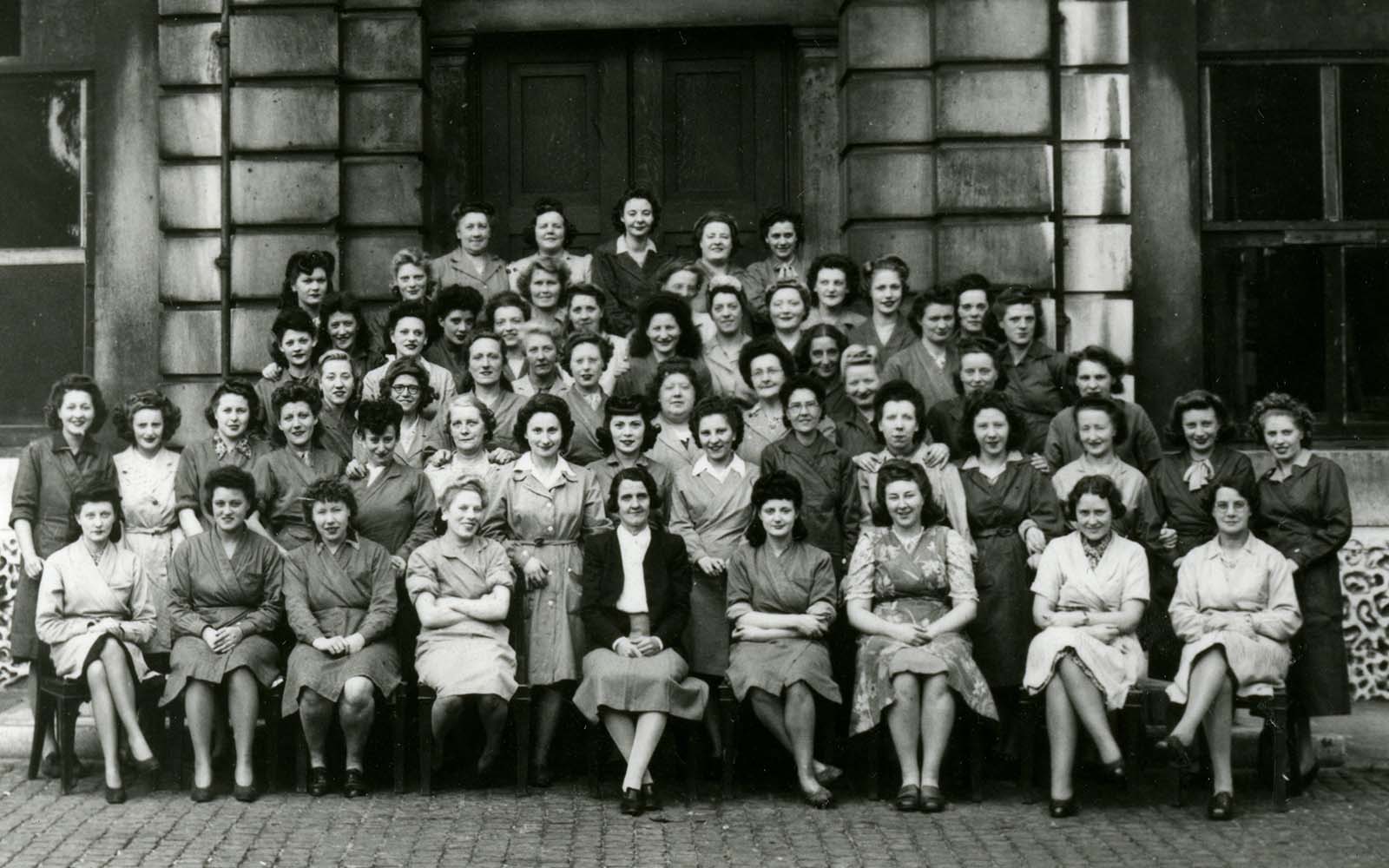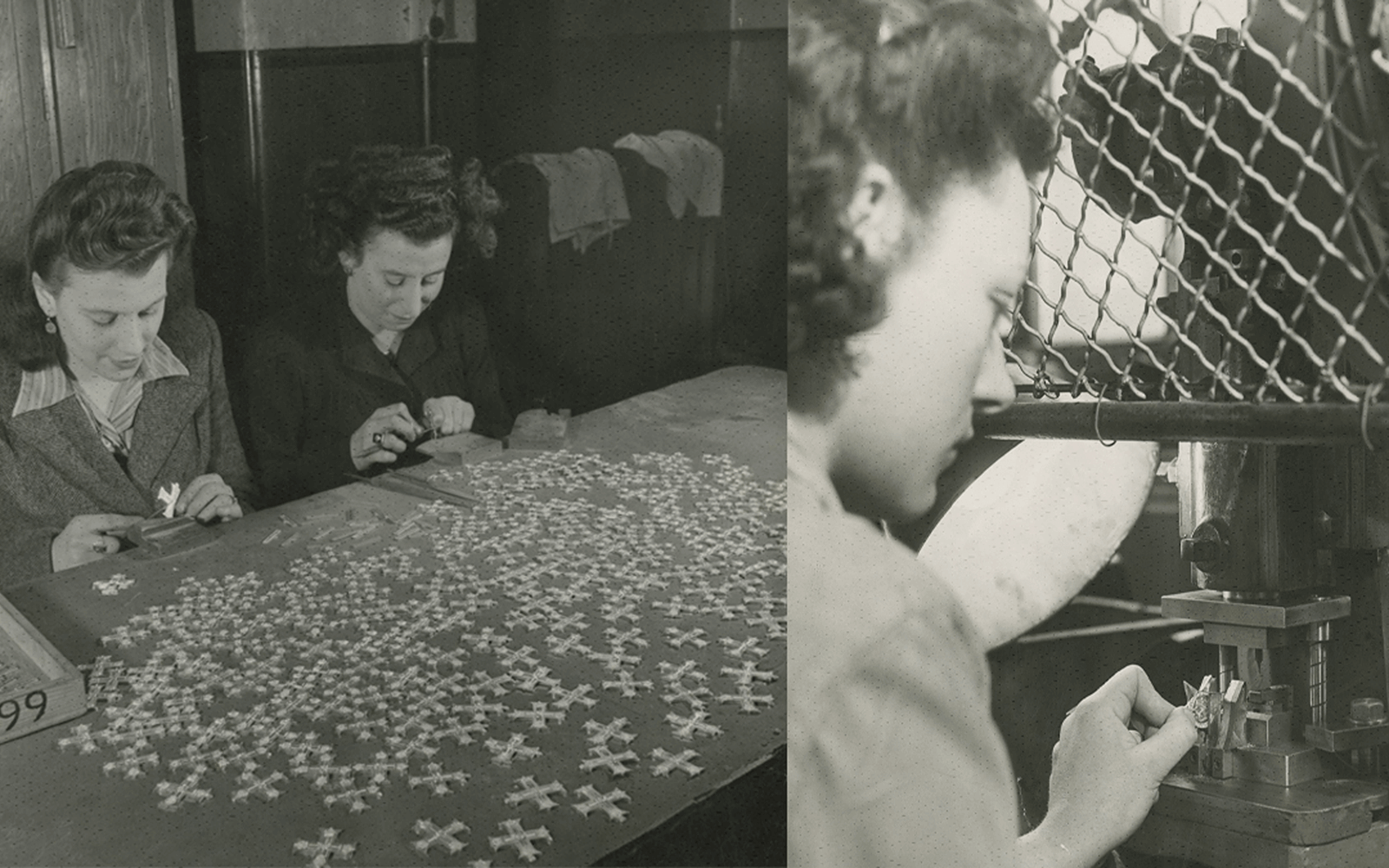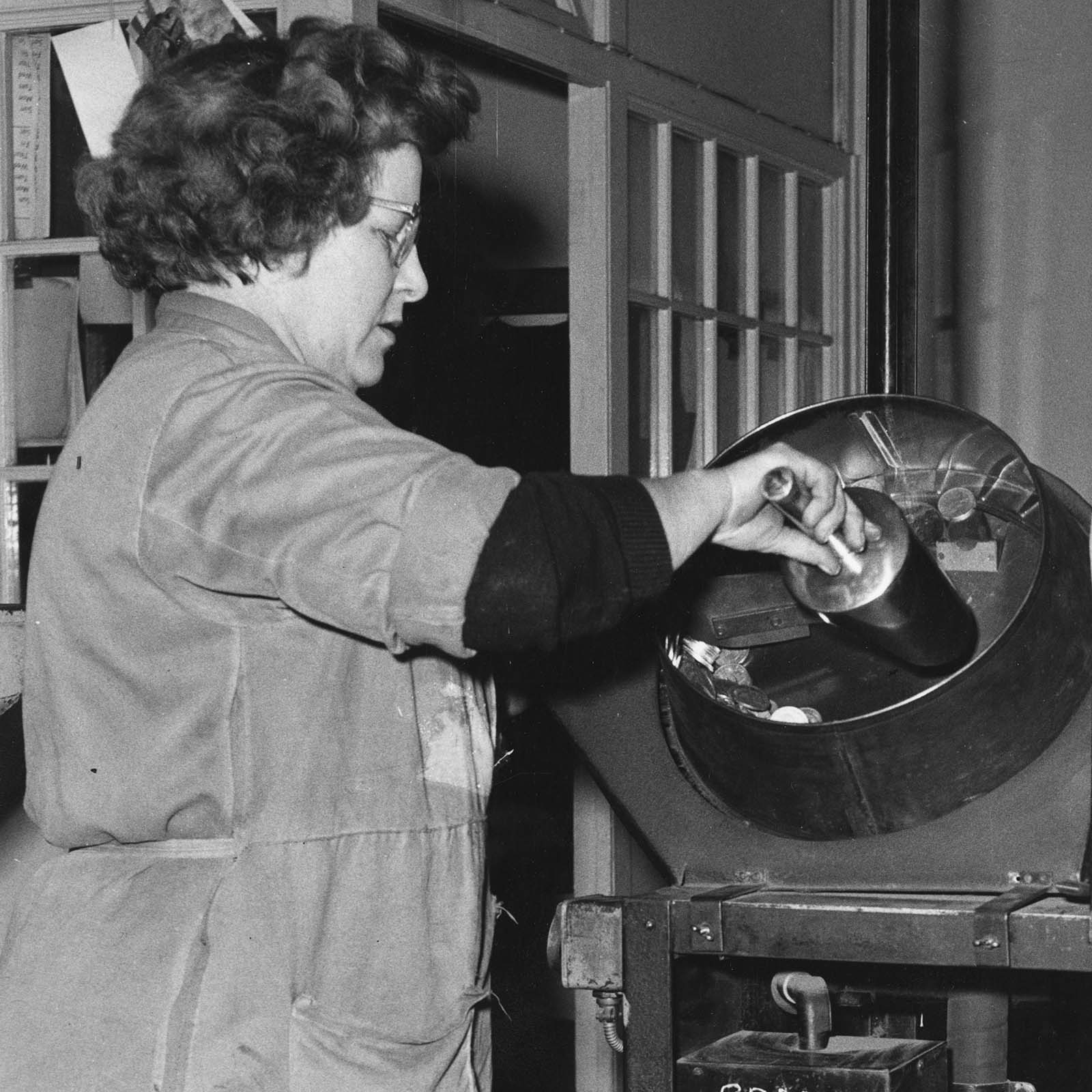Women in Industry
The employment of women in the industrial sections of the Royal Mint first began in the 1940s, amidst the Second World War. Women had been employed at the Royal Mint previously, in the First World War, where establishment lists from 1914 show that women made up 2% of the workforce, but it was not until 9 June 1941 that women were employed in production areas. A significant event in the factory, this was recorded in the Press Room Diaries as an item of interest, in bright red ink and bold capital letters.

Royal Mint Coin Press Room day book
A change of this magnitude required considerable preparation. Letters between Mint officials record discussions over what kinds of new accommodations would need to be made to the factory areas. The kitchens and lavatories, where workers could prepare for their shift and take comfort breaks, needed expansion and equipment to match, A letter of 26 May 1942 expresses particular concern that an increase in the number of female staff to 130 urgently necessitated a further two large teapots for the kitchens. The matter of finding suitable women for the roles sometimes proved difficult, though, and married women with domestic responsibilities were seen as unreliable in their attendance, having responsibilities of care to their families that rightly took precedence.

Group of female factory workers outside Royal Mint in the 1940s
In 1942 the Superintendent of the Operative Department hailed the employment of female labour as ‘an important innovation’ and that year the coining department produced a record breaking 54 million pieces in one month. By 1943, women accounted for 29% of the Mint’s total workforce, with 278 women working in production. Even so, in 1946 the women employed in the Coining Department were gradually replaced by men returning from war service, and in May those remaining were transferred to the Medal Section to work on the manufacture of Campaign Stars.

Women making medals at the Royal Mint
By 1950, the number of women employed in the production areas had fallen to only two, but this decade saw a push towards employing women in a more general capacity, rather than as a wartime stopgap. Some women were invited to employment in 1952 to package the coins of the new reign and to produce coronation medals. The names of those approached indicated that some may have been the family of men already employed in production areas of the Royal Mint.
These women were paid less than their male counterparts, earning only 85% of the male rate, and achieved lower bonuses, as is confirmed in the first issue of the Industrial Staff Handbook from the early 1950s:
‘Women employees will receive 75% of the bonus appropriate to males engaged on similar work. When women are employed in a group as direct workers, 75% of their productive time will be recorded for the purpose of calculating “man-hours”.’
While female employees were earning less, and facing larger challenges, than their male counterparts, some of the essential rights set out in this document show progress towards parity. A woman undertaking industrial work could be granted paid leave for marriage, though only if her services were being retained after marriage, and a woman who had to cease working on account of maternity confinement would receive sick pay as normal.
In the early 1960s the number of women employed at the Mint began to rise once again, not just in the offices but also in the factory: less than 20 at first, but to a total of 67 women working in production areas by 1968. Many of these women worked in the Medal department, having moved from packaging work into direct production work, and with an increase in responsibility came an increase in pay and another step towards parity.

Mrs Rush working the Royal Mint, 1963
A memo of 1966 explores the issue of pay for women moving into Medal production work, which was still set at those figures from the 1950s: basic wages at 85% of the male rate, and bonuses paid at 75% of those of male employees. The bonus scheme for the Medal room, though, was such that adding employees to the department while giving those employees a smaller share of bonuses might cause a greater overall cost than would be saved by the women’s lower wages:
‘The situation in the simple terms stated in the agreement is ridiculous, in that the introduction of a mixed male/female bonus group could give to its male members a gratuitous increase in bonus pay, simply because of the 25% reduction in hours booked in respect of women.’
Parity in pay and treatment between male and female workers was still some distance away, but each decade during this era of change moved the Royal Mint closer to a more equal and diverse organisation, where women remain an important part of all areas of the workforce to this day.
